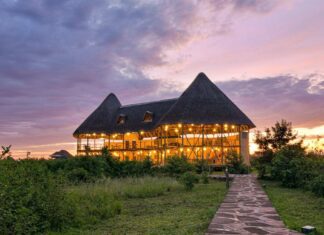Welcome to 10 national parks, 12 reserves, 13 sanctuaries and 5 community wildlife management areas. There are over 1,060 species of birds, 345 mammal species, 1,249 butterfly species, and 140 reptiles. Among the most sought-after wild animals in Uganda are the 2 Great Apes which include chimpanzees and mountain gorillas. In addition, golden monkeys are another awesome monkeys in Mgahinga gorilla park. Kibale forest is famous for 13 primate species, making it an excellent place to be amazed by diurnal monkeys.
Large mammals that are still to be found roaming free out in the wild. Including 5,000 African elephants and a multitude of Cape buffaloes. Over 30 white rhinos are highly protected at the Ziwa rhino sanctuary in Nakasongola district. On the way to Murchison falls. There are 1,575 Nubian giraffes in Uganda, with 1,450 in Murchison Falls Conservation Area. A significant number of them is also found in Lake Mburo and Kidepo Valley National Parks.
Conservation of wildlife is key
The Uganda Wildlife Authority (UWA) manages wildlife within protected areas. On behalf of and for the benefit of the people of Uganda. However, UWA has little control over wildlife on private lands. Which might be a challenge in regard to mitigating human-wildlife conflicts without compromising local people’s natural-given rights.
The current wildlife conservation policy needs to be reevaluated, according to the International Union for Conservation of Nature’s (IUCN). The most recent report on Lake Mburo National Park. In this regard, we from the Uganda Safari Travel Guide are embracing travel experiences in various forms including Eco-adventures. Like rural villages where tourism is giving hope to people, scientific research expeditions, education and partnerships. We pave way for your next Eco-adventure in Uganda through selected responsible tour operators.
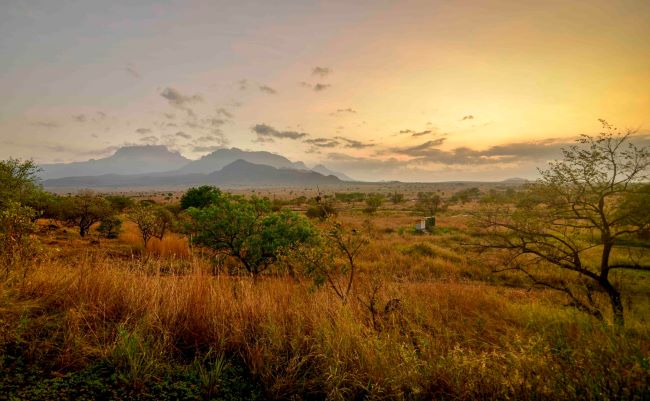
Climate change and its impact on the wildlife and ecosystems is probably the most pressing challenge globally, however. Its effects are also being felt in Uganda. Climate change: Saving Uganda’s mountain gorillas. Recent research indicates that in the Budongo Forest Reserve the decreased fruit production is probably motivating chimpanzee crop raiding. This guide to wildlife of Uganda reminds you to make wise decisions while traveling. To create a positive impact on the places you visit visit. Wildlife conservation forms part of the philosophy of the team Uganda Safari Travel Guide.
Uganda wildlife viewing tip
Whilst on a trip, sometimes, that’s when you might figure out what to explore about Uganda cultural heritage. There’s nothing wrong if you don’t follow the itinerary. Uganda wildlife viewing safari should really connect you to every other aspect about the country. From her conservation efforts, art and film to names of people and places. Always combine wildlife activities with something else for a memorable Uganda safari experience.
Mountain gorillas
There are currently 1,063 mountain gorillas (gorilla beringei beringei) living in the wild in two separate habitats including the Virunga Massif and Bwindi Impenetrable forest. They were discovered by German Capt. Robert Von Beringe in 1902. Its thought that there were about 5,000 or so of them in existence. The first scientific studies were made by George B. Schaller, in his book “the Mountain Gorilla” (1963) humans get to know about the ecology and behavior of the great ape. He was followed by Dian Fossey, who is much renowned for initiating the habituation of gorillas eventually befriending them. Fossey established Karisoke research center in Volcanoes national park Rwanda in 1967 and also battling against poaching and habitat loss was murdered as a result. By the year 1985, the Virunga gorilla population might have been less than 300 and were in danger of extinction.
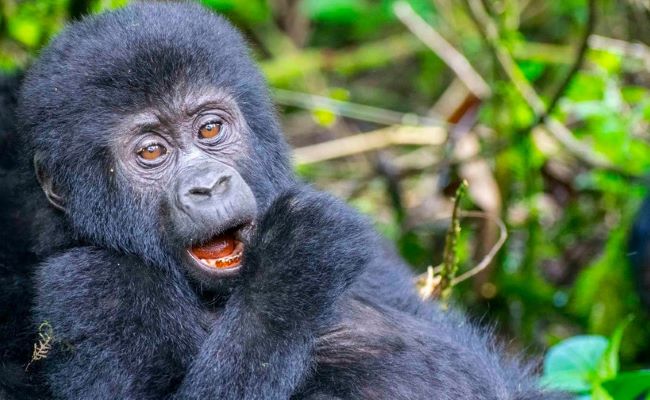
Gorilla conservation success
Conservation actions taken by the International Gorilla Conservation Program (IGCP) have since helped in the recovery of mountain gorillas. As such, the International Union for Conservation of Nature (IUCN) changed the species’ category from critically endangered to endangered in 2018, making it one of the world’s most notable conservation success stories. Those interested in a safari to gorillas in Uganda can visit Bwindi Impenetrable Forest or Mgahinga gorilla national parks.
With over 459 gorillas, Bwindi is the best place to see them. Beeing part of half of the world’s gorilla population of which 22 gorilla groups have been habituated for tourism. While it’s a success, the threats to mountain gorillas are becoming sophisticated. The population of people living around their habitats is increasing which puts a challenge for continued conservation. Due to the need for sustainably managed gorilla safaris, we urge smokers to refrain from discarding cigarette waste in the forest. Even though this is the smallest action to mention here, there are other things to consider help save gorillas.
Large carnivores
Big cats in Uganda include tree climbing lions, leopards and cheetahs. UWA and its partners including NAT GEO Explorers are now undertaking a comprehensive study of these predators in the Narus Valley Kidepo National Park. They have clocked over 2900 km and 60 different locations have camera traps installed. If you are looking for Cheetahs, the Kidepo N.P. is the right place for you. You will not see them in any other park.
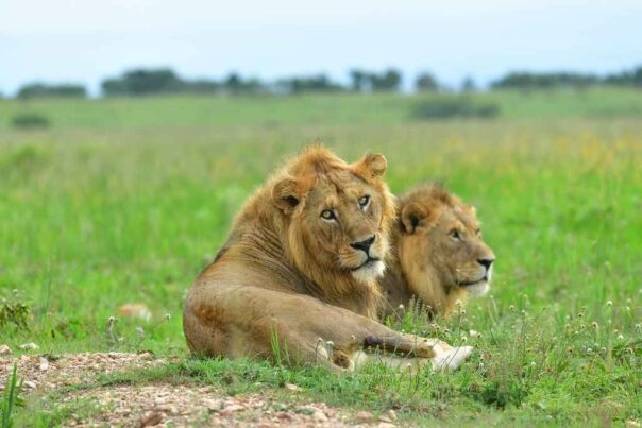
Lions
Uganda has tree climbing lions, and the big cats do it it often in the Ishasha wilderness. 600 lions were thought to live within Uganda’s 5 main savanna protected areas. In Kidepo, Lake Mburo, Queen Elizabeth, and Murchison Falls national parks. A 2009 national lion census done by Uganda Wildlife Conservation Society (WCS) and UWA found out that only 400 lions remain in Uganda. You may see them through the Lion’s experience in Kasenyi plains while contributing to their conservation. You should also take advantage for night game drives to look for leopards and nocturnal animals,though you have to be patient.
Nubian giraffes, plains zebras and Impalas
These are present in Kidepo and Lake Mburo national parks. Both parks offer walking safaris. But Kidepo has rare species that live in the semi-desert Karamoja plains north east region Uganda. For instance, cheetahs and ostriches, caracol, Aardwolves, bat-eared foxes, white-eared kobs, black-backed jackals only occur in the region. Below Kidepo on the northers slopes of Mount Elgon, the Pian Upe Wildlife Reserve is home to roan antelopes and white kob.
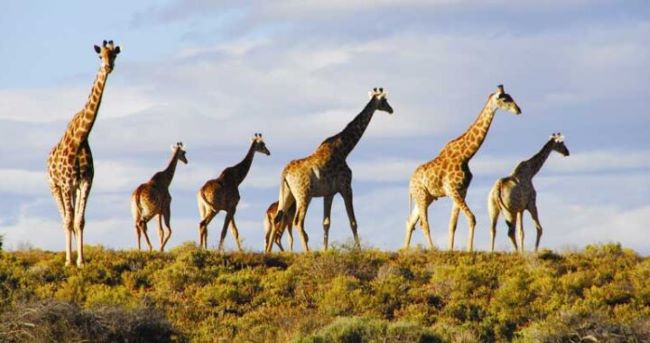
The Shoebill stork
The shoebill is a large gray wading bird (Balaeniceps rex) related to the storks and herons that inhabits wetlands of eastern Africa and has a thick broad bill (Webster). More than 150 or possibly 200 (Briggs 2007) live in Uganda, but they’re declining due to habitat destruction. There are 12 wetlands of international importance of which 4 are home to the Shoebill. Mabamba bay and Makanaga wetlands off Entebbe in Lake Victoria are probably the best places to visit and search for them by guided canoe experience. It’s home range also includes the Albert-Nile delta in Murchison falls, Lake Mburo (Nakivale wetland) and Queen Elizabeth national park.
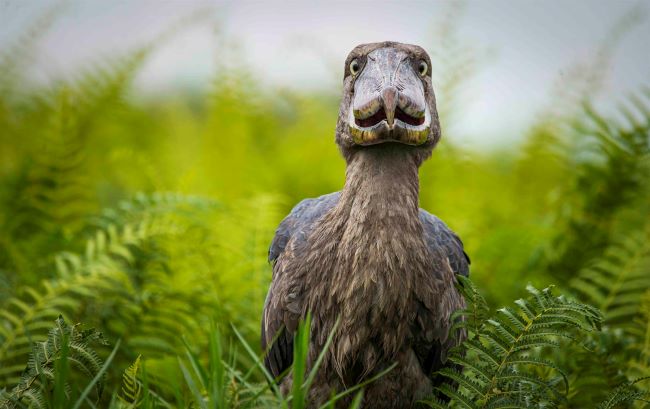
Bat Caves of Maramagambo Forest
Maramagambo forest links the northern volcanic crater lakes to the rift valley in Ishasha which adjoins to the area surrounding Lake Edward in Virunga National Park DR Congo. Not many travelers get opportunity to go deeper into the wild wildlife of this area. You will be rewarded with sightings of wild animals like the Bongo, forest elephants and buffaloes, topi, pygmy hippo. But, the Maragambo forest nature trail takes you across the migration corridor, that elephants and lions use to move between Uganda and DR Congo.
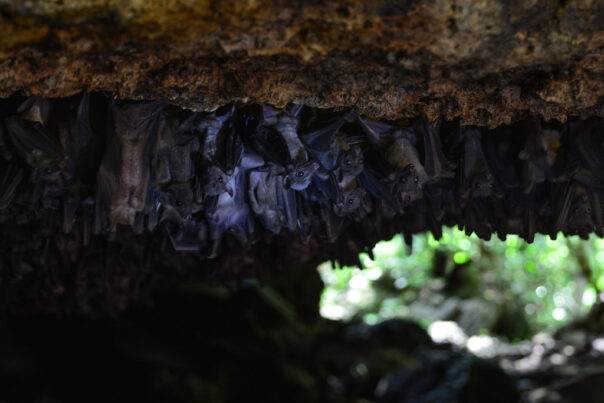
Central Africa species
The great Ituri forest, located at the northern end of the Congo basin, extends into Uganda’s Semuliki national park, which borders the DR Congo. The protected area is 220 square km in size and is located between 670 and 760m above sea level. The Semuliki Valley is the most lowland tropical forest in East Africa. It is located on the western end of the Rwenzori Mountain Range in the Bundibugyo district, south of Lake Albert. Because of its location, Semulik Park contains wildlife species associated with the Congo basin, such as the Bongo (Tragelaphus eurycerus eurycerus), which is near threatened with less 200 in the wild, owl-faced monkey, and pygmy hippo. You will find that the park is best known for bird watching, with 435 bird species. accounting for nearly 40% of Uganda’s forest birds.
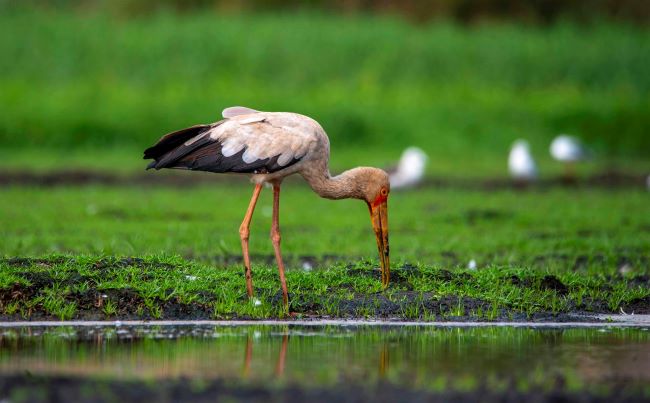
The Congo buffalo
Another species of central African animal found in Uganda is the Congo buffalo (syncerus caffer nanus). Commonly known as the African forest buffalo, it is an elusive specie that inhabits the tropical forests of central Africa. However, it is common to see the many Congo buffaloes in the open plains of Ishasha wilderness, the southern sector of Queen Elizabeth National Park. The Ishasha area lies in the rift valley and adjoins Lulimbi, the eastern sector of Virunga National Park in the DR Congo. Thus provides a corridor for large mammals to migrate, especially African elephants and lions. Ishasha is most famous for the tree climbing lions and travelers on Uganda safari who spend a night there might get a chance to see both species.


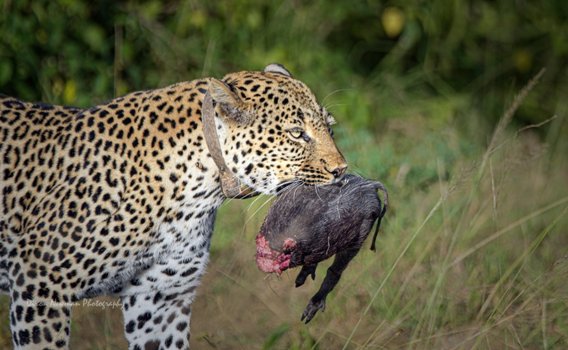
 Uganda Safari Travel Guide Advert
Uganda Safari Travel Guide Advert